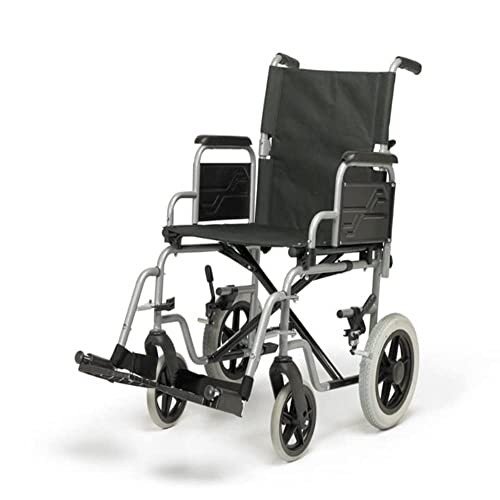A Comprehensive Guide to Buying a Mobility Scooter
Mobility scooters have actually ended up being a vital tool for many people aiming to enhance their independence and mobility. With a large selection of models and functions readily available, picking the right mobility scooter can be daunting. This short article provides a helpful guide to assist customers browse their choices, evaluate their needs, and make a notified purchase.
Understanding Mobility Scooters
Mobility scooters are electric vehicles developed for people who experience mobility difficulties. They are especially beneficial for senior citizens, those with disabilities, or individuals recuperating from injuries. Mobility scooters can vary widely in regards to design, features, and prices.
Kinds Of Mobility Scooters
Before embarking on a purchase, it's important to understand the various types of mobility scooters readily available:
Three-Wheel Scooters:
- Generally more maneuverable in tight areas
- Lightweight and portable
- Ideal for indoor use
Four-Wheel Scooters:
- Offer greater stability and balance
- Appropriate for outside usage over different surfaces
- Typically have a longer battery life
Foldable/Portable Scooters:
- Designed to be easily carried and stored
- Can often suit the trunk of an automobile
- Ideal for those who travel regularly
Heavy-Duty Scooters:
- Built to accommodate larger people
- Frequently included more robust functions for outside usage
- Typically geared up with bigger batteries for prolonged variety
Aspects to Consider When Buying a Mobility Scooter
1. Weight Capacity
Choose a mobility scooter that can support the user's weight. The majority of scooters have a weight limit ranging from 250 to 500 pounds. It is essential to guarantee that the scooter can accommodate the user conveniently.
2. Variety and Battery Life
The variety is how far the mobility scooter can travel on a single charge. Ali Marotta vary between 10 to 30 miles. Consider the user's day-to-day activities and choose a scooter with an ideal range.
3. Scooter Dimensions
Think about the size of the scooter, including its weight and dimensions. A more compact scooter might be ideal for narrow hallways and tight spaces, while bigger models use extra stability and convenience.
4. Terrain Capability
Examine where the scooter will mostly be utilized. If the user plans to travel mainly on pavement, a lightweight design might be enough. However, if the user needs to traverse gravel or irregular surfaces, think about a four-wheel scooter built for off-road use.
Top Features to Look For
Comfort
- Adjustable Seats: Look for scooters with cushioned and height-adjustable seats to ensure comfort throughout travel.
- Armrests: These improve security and support while browsing.
Safety and Visibility
- Headlights and Taillights: Essential for nighttime use.
- Turn Signals and Reflectors: Improve presence and security while on the roadway.
User-Friendly Controls
- Joystick or Drive Controls: These need to be user-friendly and simple to manipulate.
- Easy-to-Read Displays: A control panel that shows battery life, speed, and range can improve the user experience.
Additional Features
- Storage Compartments: These offer included benefit for carrying individual products while on the go.
- Weather condition Protection: Consider models with rain covers or windshields if used in variable climate condition.
Expense Considerations
When budgeting for a mobility scooter, prices can range anywhere from ₤ 500 to over ₤ 5,000 depending upon the design, features, and brand name. Additional costs might include:
- Extended Warranty: Protects versus problems and can save cash in the long run.
- Devices: Optional functions, such as upgraded seats, lights, or storage services.
| Feature | Cost Range |
|---|---|
| Basic Models | ₤ 500 - ₤ 1,500 |
| Mid-Range Models | ₤ 1,500 - ₤ 3,000 |
| High-End Models | ₤ 3,000 - ₤ 5,000 |
Funding Options
Many merchants offer funding strategies, and some regional government efforts might provide grants or assistance for those in need. Examine prospective monetary support with neighborhood resources or mobility service organizations.
FAQs about Buying a Mobility Scooter
What is the difference in between a mobility scooter and a wheelchair?
Mobility scooters are motorized and permit users to navigate independently, while wheelchairs might need physical assistance or manual operation.
How do I maintain a mobility scooter?
Routine maintenance includes examining battery life, cleaning up the scooter, and inspecting tires and brakes. Always describe the user manual for particular standards.
Can mobility scooters be utilized inside your home?
Yes, lots of designs are created for both indoor and outside usage. Nevertheless, three-wheel scooters tend to be much better matched for indoor navigation due to their tighter turning radius.
Are mobility scooters covered by insurance coverage?
Some insurance coverage plans cover a part of the costs for mobility scooters if they are considered clinically needed. Contact your supplier for specific information.
How fast can a mobility scooter go?
Many mobility scooters have an optimal speed ranging from 4 to 8 miles per hour. Nevertheless, the suitable rate might vary depending on regional policies.
Purchasing a mobility scooter can significantly improve one's independence and quality of life. By comprehending the types, functions, and expenses associated with mobility scooters, potential buyers can make educated decisions that match their needs and preferences. Personalization and comprehensive research are crucial to ensuring satisfaction with this essential financial investment.

